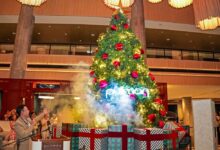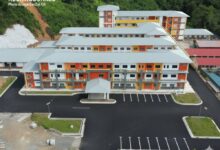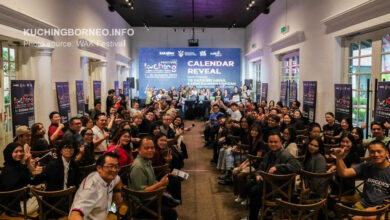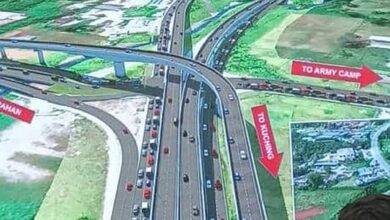A day at Borneo Cultures Museum
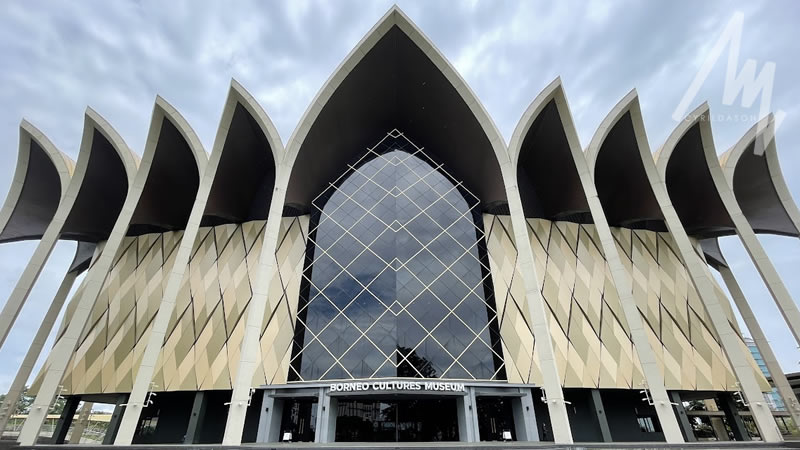
I’ve driven past the Borneo Cultures Museum countless times as a local Kuching resident, but I never had the chance to visit it because I had been occupied by work.
Thankfully, this time around, there was time to do so, so I made plans to go there on a weekday.
In case you didn’t know, the museum is the largest of its kind in Malaysia, and it was opened in March 2022, making it a rather new attraction in the lovely city of Kuching.
Going to the museum
There’s only one main entrance to the museum, but there’s many ways to get there.
If you refer to the map below, you will notice that the museum is accessible by both car and also by foot, particularly if you stay in hotels nearby the Kuching City Centre.
Since I can drive and I do own a car, I decided to drive there.
This means I have two options of entry, which is from the front of the museum (using Jalan Tun Haji Openg, opposite RTM), or through the back of the museum using Jalan P. Ramlee (entry beside the Islamic Heritage Museum or Wisma Hopoh).

Both entries are connected to the same public parking lot of the museum, which had limited space.
I choose the later, but soon found out that the parking lot was full and this forced me to turn out and park my car at a vacant parking space just beside Wisma Hopoh, which is quite a few minutes walk from the museum.
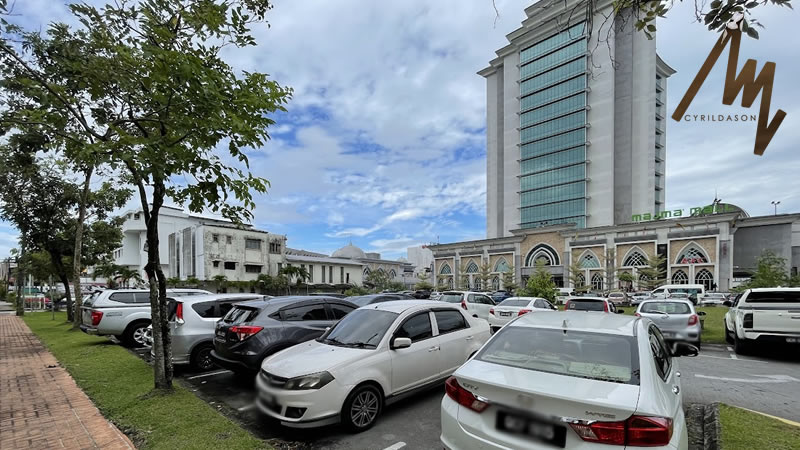
If you are taking public transportation such as ride-sharing transportations like Grab, or a taxi, you will be able drop-off of at the entry of the museum.
Buying Borneo Culture Museum tickets
Walking up to the museum from Jalan P. Ramlee does have its perks as the scale of the museum slowly reveals itself as you walk up the hill towards the museum.
At this point, I was in awe of how huge the structure was as I slowly made my way into the museum.
The arches were huge and the museum design was nothing short of unique.
Since I was rather early, there wasn’t that many people, and the polite Borneo Cultures Museum staff kindly guided me to register myself at the information counter.
At this counter, I was briefed on the charges and a brochure was shown to me. I had to produce identification during this briefing.
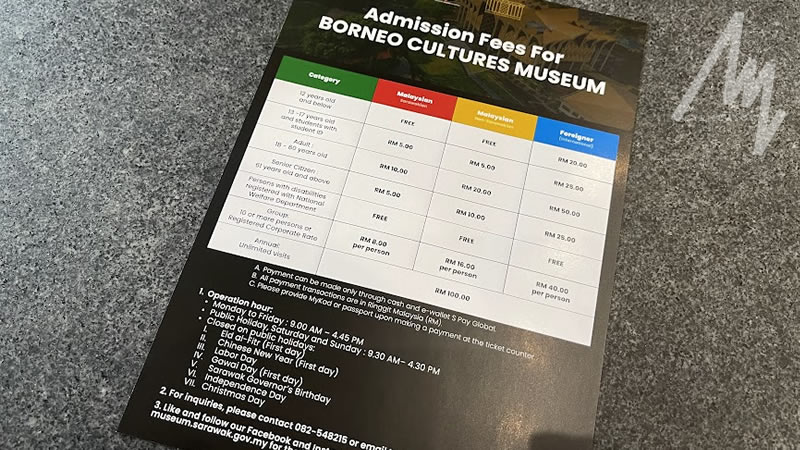
This was because the entry rate for me was charged based on my nationality and age, and the rates will be decided at the counter before I was pointed to the payment/ticket counter at the back.
There was quite a queue at the counter, but since I was using S-Play Global (Sarawak Pay), I had a shorter line.
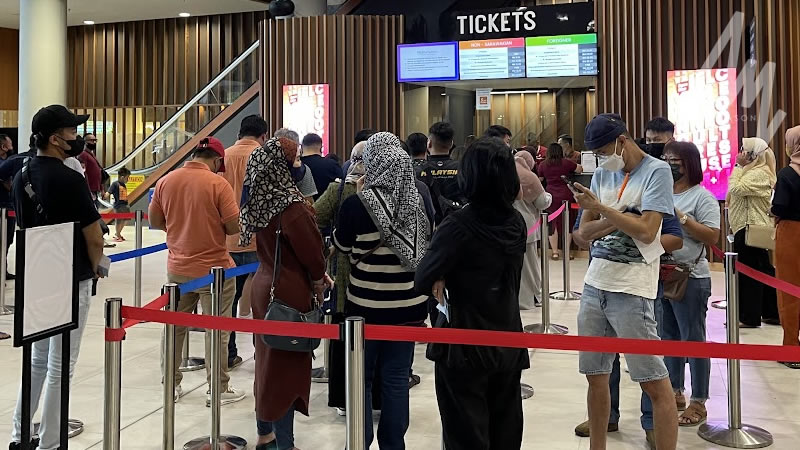
Ticket purchase was fast and easy and I was then showed to the entrance escalator which meant my journey in the museum would now begin.
Exploring BCM
The first gallery I encountered at the Borneo Cultures Museum is the Children’s gallery.
This was on the second level of the museum. (I went on the escalator, remember?)
Here, there’s plenty of interactive exhibits and items which are related to recycling, saving rivers and adventure.
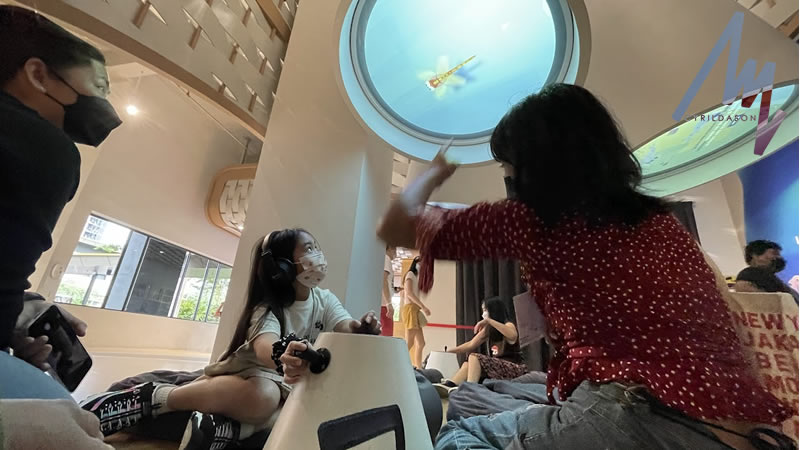
They had drums, tunnels, platforms, scribble boards, a photo booth, slides, headphones and more.
There’s also something like a virtual boat ride which allows one to experience how it feels like when cruising on a long boat.
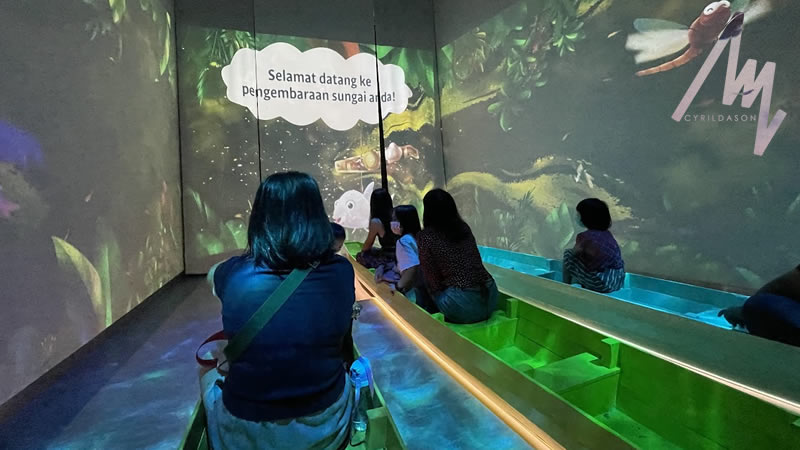
For kids, this place is like a mini playground as they are able to interact with the exhibits while learn about what was on display. I noticed kids really enjoyed themselves here.
I proceeded to the upper floor which was the third level.
The third level which was themed ‘In Harmony with nature’ was more for adults.
Here exhibits focused on the people in Sarawak which stayed at coastal areas, and highlands, with a large section also focusing on the rainforest.
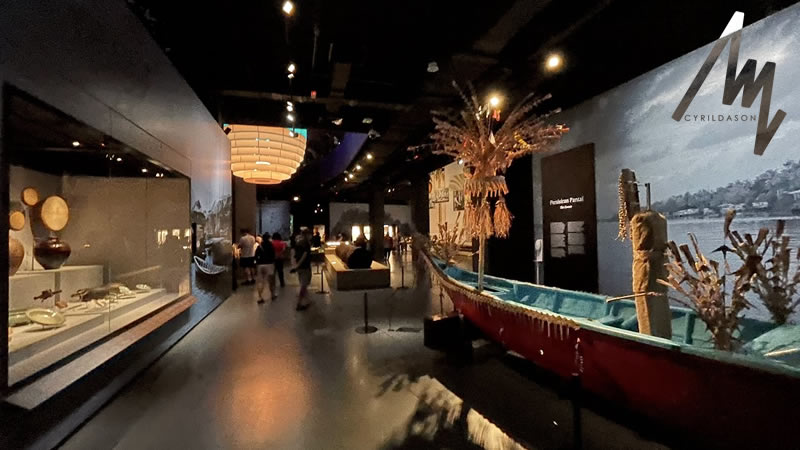
It was here one could learn about the indigenous people that populates Sarawak, as well as their rituals and way of life.
There’s also a huge replica of the ‘Baruk’ and showcases on traditional burials.
What really caught my eye here however was legend of Santubong, which I thought was so well curated via four pieces of animated displays with the help of a curator on sight.
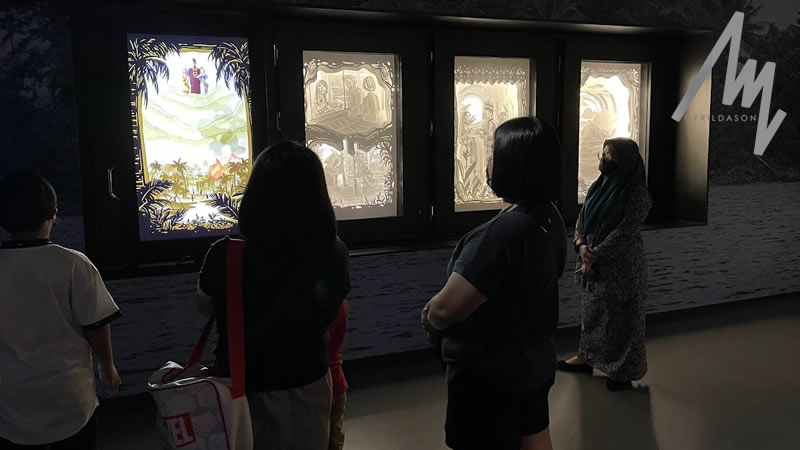
The fourth level, themed Time Changes, had exhibits about early human settlements in Sarawak up to Sarawak becoming what it is today.
There were items I remember my grandfather had on display, and there were also old Sarawak currencies displayed.
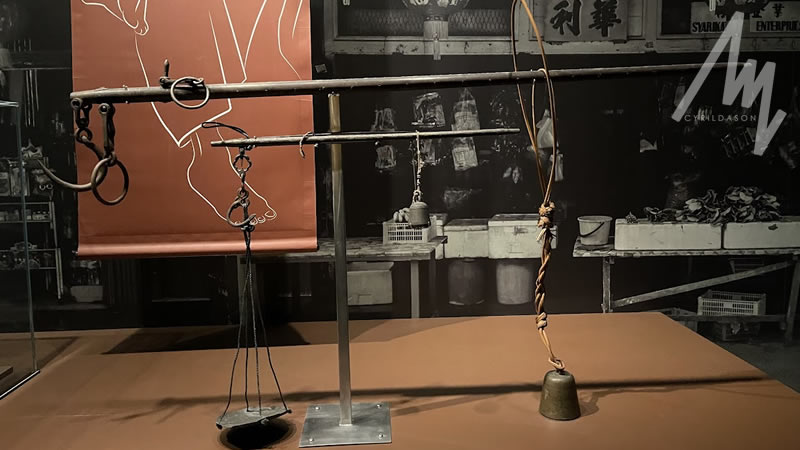
In short, this particular gallery had remnants of the past focusing a lot on the birth of Sarawak to how it became Sarawak of today.
It was at this level that I realized how much interesting details about the formation of Sarawak had been missing in my school history books.
Aside from that, there’s a war related items like cannons and guns on display, as well as documents pertaining to the independence of Sarawak.
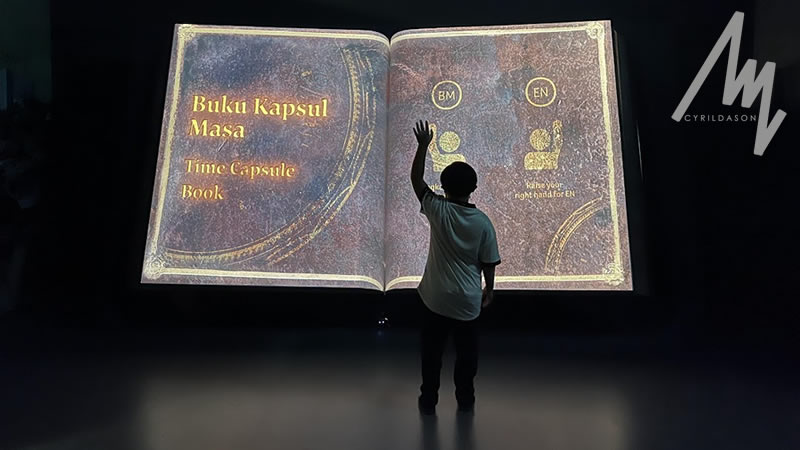
I think I was so occupied with the displays here that I took very little photos of the exhibits.
The fifth level was themed Objects of Desire.
The exhibits here focused mainly on crafts and art by Sarawakians which dated way back in the early days.
To fans of delicate work and arts, these exhibits are interesting.
However, I’m not much a fan of such work, so I ended breezing through it quickly.
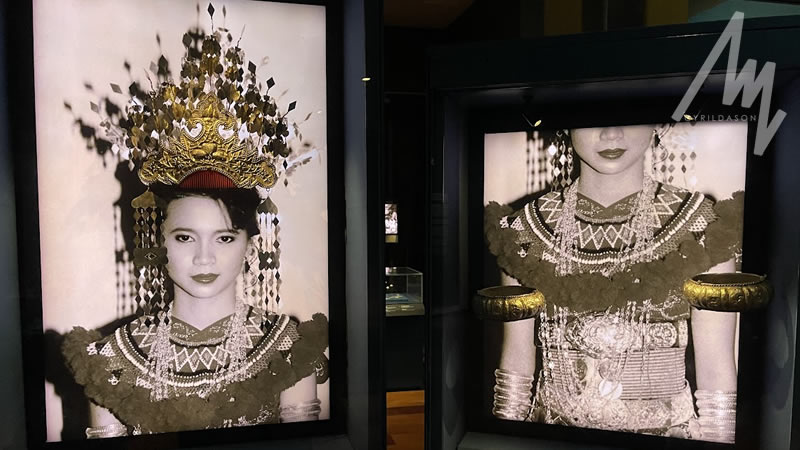
During my tour, I noticed that there were exhibits about trade, craftmanship, spiritual related designs, and status related designs.
There was also an animated and interactive floor prior to exiting the gallery as you can see below.
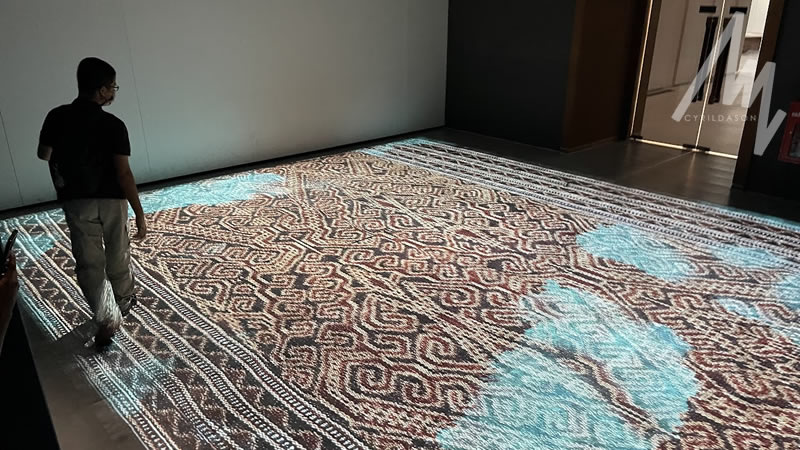
Outside the gallery hall, I enjoyed the beautiful view overlooking Padang Merdeka as you can see in the photo below.
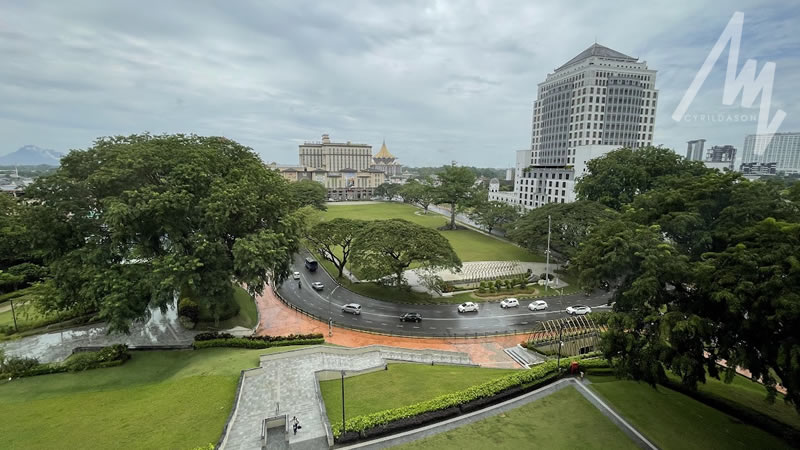
As I moved to the lobby, there was a special Shamanism exhibition in the Temporary Exhibition Gallery in which it showcased what Shamans do, and how they do are able to perform their rituals.
The exhibition also gave information on how shaman related items are transported to the museum for the exhibition.
To be honest, there was a slight chill down my spine as I went through the exhibits because the museum also played ‘shaman-like’ chants in the exhibition area.
Regardless, I thought the exhibition was very interesting and wished I had more time to read everything one by one.
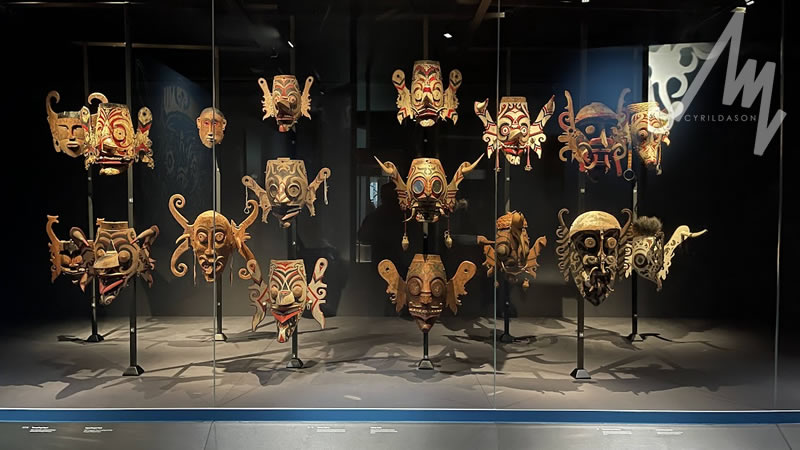
I ended the tour of the museum by checking out the lobby of the museum, as well as its surroundings.
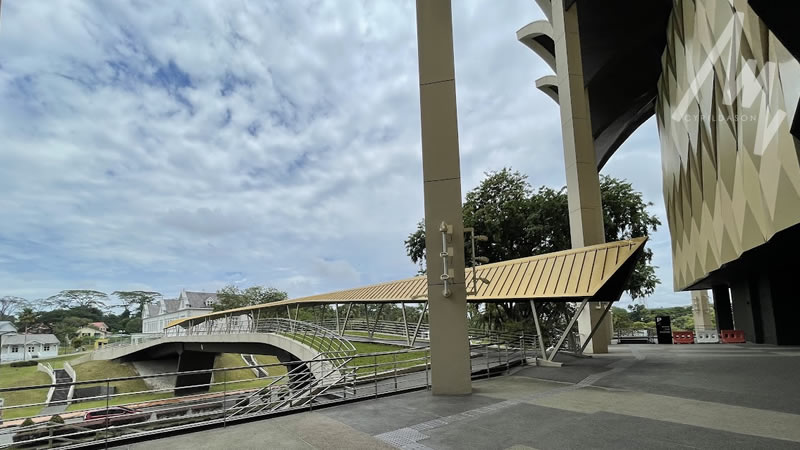
Eating and shopping at Borneo Cultures Museum
I noted there were two eateries available at the lobby of the museum as well.
One was the fine tuned Borneo Cultures Museum Restaurant which I was told served fine dining dishes, while the other was the BCM Cafeteria. I wanted to eat non-halal food, so I opted not to go to the eateries which were likely halal.
Not far from the eateries, there was also a gift shop which had paintings worth up to RM95,000 on sale.

Favourite highlights of Borneo Cultures Museum
The items on Level 4, which was focused on the building of Sarawak as a state, is perhaps my favourite gallery.
Here I could see items like the ancient caves, skeletal remains of past Sarawakians, colonial era Sarawak items, war related items, and the proclamation of Malaysia which marked the formation of Malaysia.
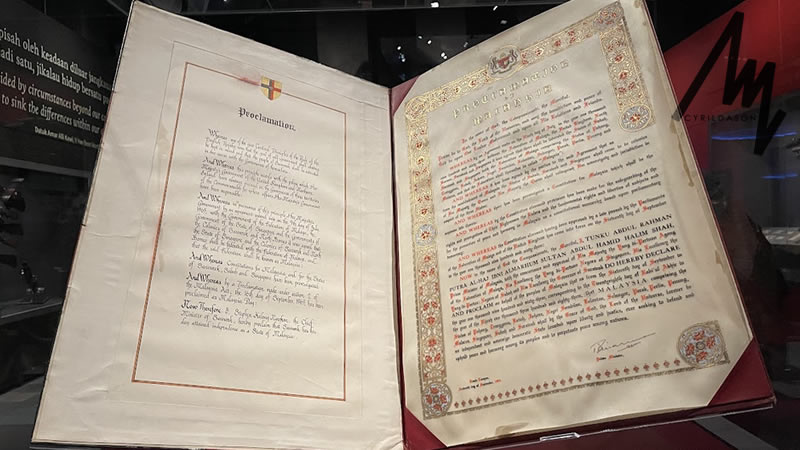
I also really liked the Santubong animated showcase which was fun to watch.
Another favourite of mine was the children’s gallery which I thought was fun even for an adult.
There’s tonnes to do here and it was very interactive.
Tips if you are going
Anyway, if I were to visit again, there’s certain things I would do differently to enjoy myself more.
That said, if you are going to the museum, here’s some handy tips I would recommend.
- Wear comfortable clothing including shoes because you will walk a lot. There is no dress code nonetheless.
- Come early so that you can avoid the crowd and find parking (if you are driving)
- Bring a camera because there’s some pretty good spots for photography in and out of the museum. Remember however, tripods and use of flash is prohibited.
- Bring cash or install and reload your Sarawak Pay (S-Pay Global) e-wallet. Those with S-Pay actually pay much faster at the queue. There’s no ATM machines I noted.
- Bring official identification such as passports, student cards and identification cards as they will be used for rates.
- There’s a locker room at the lobby if you need to store stuff because bags are not allowed.
- If you are driving, go in using the junction at Hopoh. This way, if you aren’t allowed into the parking lot due to it being full, you can go to the nearby parking space without making a huge round.
Also, there’s house rules implemented at the museum as you can see below.
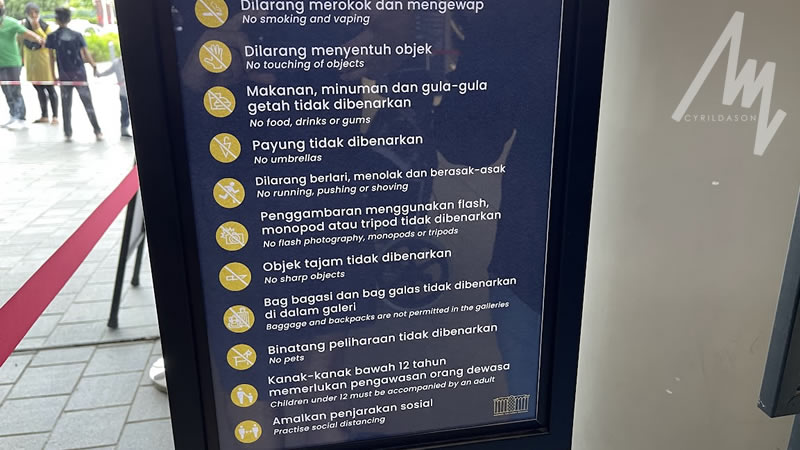
Conclusion
I think my three hours spent at the museum is far from enough if I really read every exhibit closely. There was so much on display and they were also well exhibited.
The Sarawak Museum did a good job to ensure the exhibits were well taken care off and allowed each exhibit to shine on their respective display.
That said, I think the museum is a worthy attraction and a must visit for anyone coming to Kuching or Sarawak.
Really, for the rates paid, it’s worth a visit.
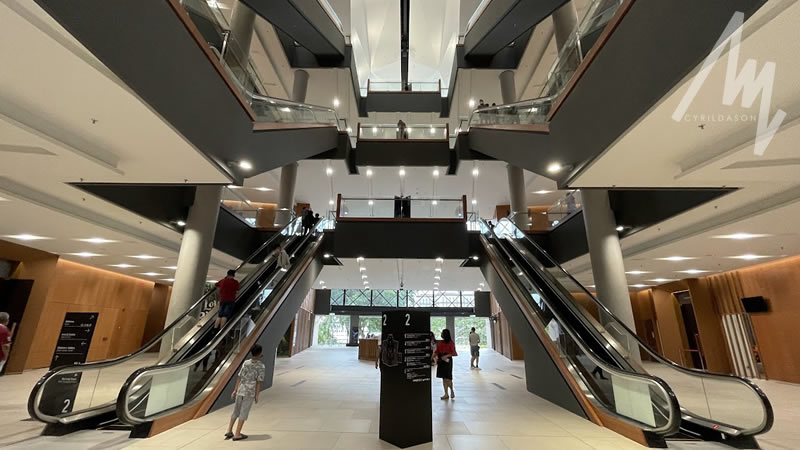
Other related articles and links related to BCM
So there you have it, my complete post about what I had done at Sarawak’s biggest museum, the BCM.
If you need more intel about the museum, or want to read or find matters related to BCM, feel free to read the link below.
- Learn more about BCM (including more photos)
- Download SarawakPay (S-Pay Global) ewallet
- Buy museum related souvenirs
- Read about other museums in Kuching
- Read about e-hailing (ride sharing) in Kuching
